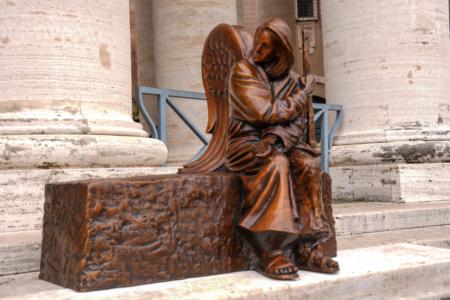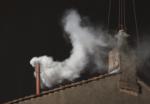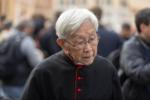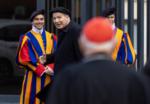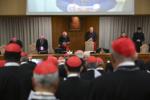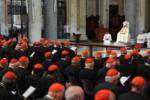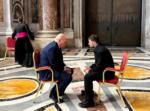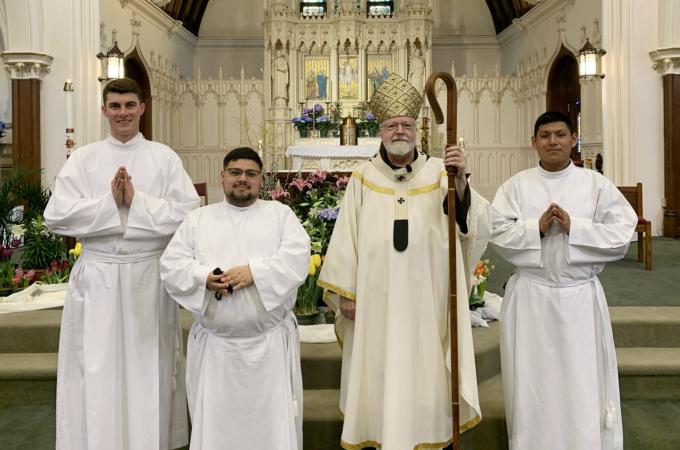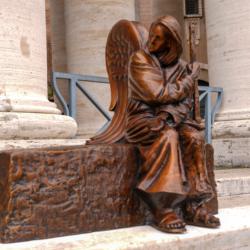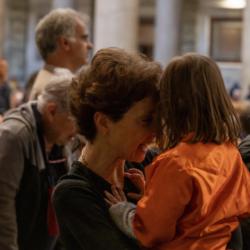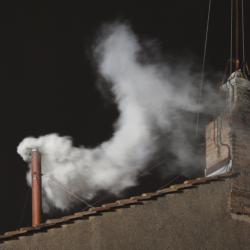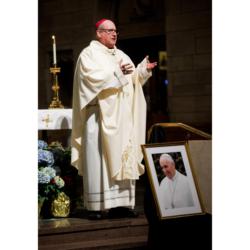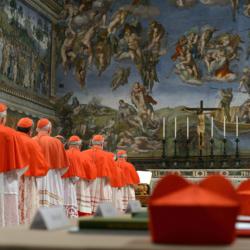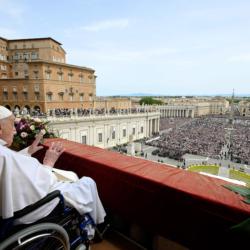From Cardinal Seán's blog
On Saturday evening, I went to St. Lawrence Church in Brookline for the vigil Mass of Divine Mercy Sunday, during which we had the institution of new lectors and acolytes for our Redemptoris Mater Seminary. They had one new acolyte, Javier Padilla, and two lectors, Aaron Sanz and Gustavo Neitzke.
I was impressed by how well Father Jonathan has decorated the church with all the flowers.
These ministries, which used to be known as minor orders, are important sacramentals that underscore the importance of the formation and preparation for ordination. It's always a great joy to institute men to these ministries because it's an indication that they are seriously embracing the process of preparing themselves for priestly ordination.
I was also very impressed by the paschal candle that a member of the community made for the seminary with the icon of the Blessed Trinity.
P3 Boston
On Monday, I participated in a gathering of the P3 Boston young professionals' group at the cathedral, organized by Father Eric Cadin and Father Michael Zimmerman.
We had an hour of Eucharistic adoration and confessions, followed by a conference I gave them on the Church's teaching on racial justice. Afterward, we had a time of dialogue.
It was wonderful to see so many young adults participating. Many of them were coming to the cathedral for the first time, which was very encouraging.
Dreamers legislation
Tuesday, I asked UMass Boston Chancellor Marcelo Suarez-Orozco to meet with me and Jim Driscoll, the director of our Massachusetts Catholic Conference, to discuss how we might promote legislation that would help Dreamers qualify for in-state tuition. There are about 800,000 Dreamers, those brought to this country without documentation as young children, throughout the United States.
Chancellor Suarez-Orozco is also a member of the Pontifical Academy of Social Sciences. He shared with me some details of their recent meeting, which they dedicated to the issue of child and youth refugees. About half of the 26 million displaced people in the world right now are children, and many of them find themselves on a journey that can last eight or 10 years before they reach their final destination. Of course, it's a devastating situation for these children and their families, and the Holy See is very focused on what can be done to help them.
European Union
The European Union ambassador to the Holy See regularly brings together the ambassadors from the other EU nations who have missions to the Holy See for a talk by an invited guest. So, on Wednesday, I was asked to speak to them about what the Church is doing in the area of safeguarding as well as immigration.
It is certainly amazing when you think about the network of influence that the Holy See has through these ambassadors representing countries from all over the world -- only the United States has more diplomatic missions than the Vatican.
Although the European Union is very secular, many of those involved in its founding were very Catholic. In fact, the man who designed the EU flag was inspired by the Marian figure of the Woman of the Apocalypse with the crown of 12 stars described in the Book of Revelation. Consequently, the EU flag has a circle of 12 stars on a field of blue, the color of Mary. So, while I don't think they're currently anxious to emphasize their Christian roots, the EU certainly has them, and the flag is one vestige of that.
